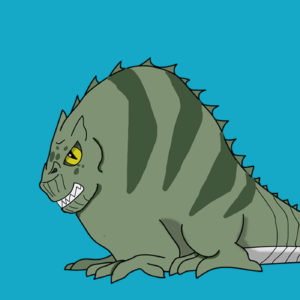Abac (Ah-bahk)
Abacs, also known as Afancs, were amphibious reptiles mainly regulated to wetlands along the equator. All they did was eat and nap…and it showed. They were slow-moving sedentary hunters who relied on camouflage to feed, lurking in the depths of murky swamps and waiting for prey to come to them. They could only breathe above the water but could hold their breath for an average of eight hours. An average adult weighed 360 kg (790lbs), but they could sometimes weigh over 450kg (990 lbs). Adults were typically brown or olive green with white undersides. A group of abacs was called a “congregation.” Male “bulls” mated in mid-spring but didn’t stick around to raise their “juvenile” young. Female “cows” gave birth to eggs in the shape of dung to ward off predators. Hatchlings were a solid yellow when born, and gender was determined by the average nest temperature, which had to be above 34°C (93°F) for bulls.
Raised commercially for their meat and skin, abacs were categorized as fish on Fabella’s International Endangered Species List (FIESL). Albino abacs were rare, and their scales were a pricey ingredient in advanced potion-making. They were traditionally afraid of people and would never attack unless provoked. The feeding of wild abacs was illegal because they could lose their fear of people and learn to associate them with food, thereby becoming a greater danger and an increased risk to locals.

